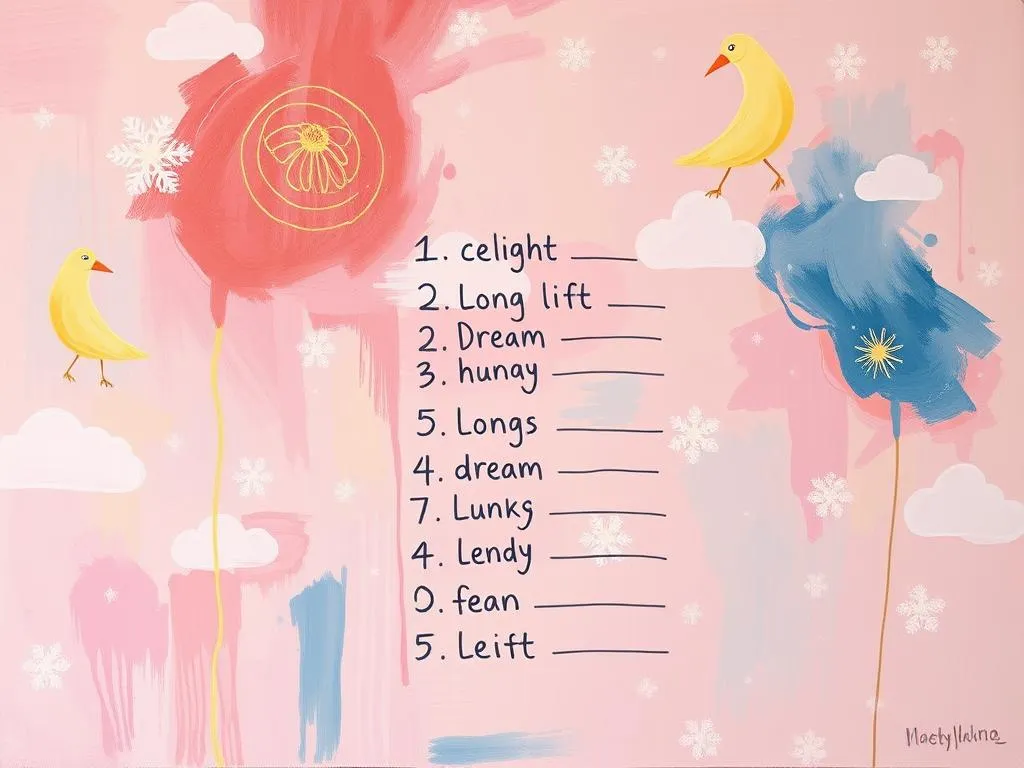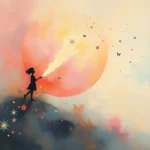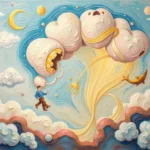
Dreams have been a source of fascination and intrigue throughout human history. They act as windows into our subconscious, revealing our deepest fears, desires, and thoughts. Many people find themselves pondering the significance of their dreams, often seeking meaning behind symbols that appear in their nighttime narratives. Understanding dream symbolism not only offers insights into our personal psyches but also connects us to universal themes shared by humanity. This article will explore a long list of dream symbols, their meanings, and how they relate to our waking lives.
Symbolism and Meaning
When analyzing dreams, it is essential to recognize that symbols do not hold a one-size-fits-all meaning. Instead, they are deeply personal and can vary widely depending on individual experiences, cultural backgrounds, and emotional states. However, certain symbols tend to resonate universally. For example, water is a prevalent symbol in many dreams, often representing emotions and the subconscious mind. A calm lake might signify tranquility, while a turbulent sea could indicate emotional turmoil.
Another common symbol is flying, which is frequently associated with freedom and liberation. Dreaming of soaring through the sky may reflect a desire to break free from constraints in waking life, suggesting that the dreamer seeks adventure or a new perspective. Conversely, if the dreamer struggles to fly, it might indicate feelings of inadequacy or obstacles that hinder personal growth.
Teeth are also notable symbols in dreams, often linked to feelings of power and self-esteem. A dream in which teeth crumble or fall out may reflect anxieties about aging, loss of attractiveness, or concerns about one’s ability to communicate effectively.
Animals frequently appear in dreams and can symbolize various aspects of the self or external influences. For example, dreaming of a snake may invoke feelings of danger or deceit, while a cat might symbolize independence or intuition. The specific animal and its context in the dream can significantly affect the interpretation.
Exploring different perspectives on these symbols can deepen understanding. For instance, while water is primarily associated with emotions, in some cultures, it also represents purification and renewal. Similarly, flying can symbolize not only freedom but also escapism or avoidance of reality, depending on how the dreamer feels during the experience.
Key Scenarios and Variations
The context of a dream plays a crucial role in its interpretation. Variations in scenarios can lead to vastly different meanings. For instance, a dream about being chased is a common scenario that can evoke feelings of fear or anxiety. The identity of the pursuer is critical; if it is a person, it could symbolize unresolved conflicts or fears about relationships. If the pursuer is an animal, it might represent instinctual fears or primal emotions.
Another variation is the setting of the chase. Dreaming of being chased in a familiar environment can indicate that the dreamer feels threatened by something they cannot escape in their waking life. However, if the chase occurs in an unfamiliar location, it may symbolize facing new challenges or fears that the dreamer is grappling with.
Consider the dream of losing control of a vehicle. This scenario could symbolize a lack of direction in life or feeling overwhelmed by circumstances. If the dreamer is driving recklessly, it might suggest impulsive behavior or a desire to break free from responsibilities. Conversely, if the dreamer is a passenger, it may indicate that they feel a loss of agency in their life, relying on others to steer their destiny.
Another scenario involves being naked in public. This dream often evokes feelings of vulnerability and exposure, suggesting that the dreamer fears judgment or ridicule from others. However, if the dreamer feels confident and unbothered by their nudity, it may symbolize a sense of freedom from societal norms and an acceptance of one’s true self.
Dreams of death can also vary widely in interpretation. While death often evokes fear, it can also symbolize transformation and new beginnings. A dreamer who witnesses a loved one’s death may be processing their grief or reflecting on changes in their relationship. Alternatively, dreaming of one’s own death might indicate a desire for personal growth or a transition into a new phase of life.
Real-Life Connections and Takeaways
Connecting dream symbols to real-life situations can provide a framework for self-reflection and personal growth. By analyzing dreams, individuals may uncover hidden emotions or unresolved conflicts that impact their waking lives. To facilitate this process, consider the following reflective practices.
First, keep a dream journal. Recording dreams shortly after waking can help capture details that may fade from memory. Over time, patterns may emerge, offering insights into recurring themes or symbols that resonate with the dreamer’s experiences.
Next, reflect on emotions experienced during the dream. Were there feelings of fear, joy, or confusion? Understanding the emotional landscape can provide clues about what the dream may be revealing about the dreamer’s waking life. For instance, if a dream evokes feelings of anxiety, it may be worthwhile to examine stressors in daily life that could be contributing to these emotions.
Additionally, consider the context of the dream and how it relates to current life situations. Are there conflicts, transitions, or challenges that mirror the scenarios presented in the dream? Identifying these connections can aid in personal development and self-awareness.
Moreover, engaging in dialogue with the dream can be a powerful tool for deeper understanding. This involves visualizing oneself in the dream and asking questions about the symbols and scenarios. Why was the dreamer being chased? What does the snake represent? This practice can unlock new layers of meaning and offer insights into the subconscious.
Finally, explore how the meanings of symbols can serve as guidance for personal growth. For example, if water symbolizes emotions, a dreamer may recognize the need to address their feelings, perhaps through creative expression or by seeking support from loved ones. If a dream of flying reveals a desire for freedom, the dreamer might consider ways to pursue their passions or break free from limiting beliefs.
In conclusion, dreams offer a rich tapestry of symbols and meanings that can illuminate our inner worlds. By delving into the significance of these symbols and reflecting on their relevance to our lives, we can gain a better understanding of ourselves and navigate the complexities of our emotions and experiences. As we embark on this journey of exploration, it is essential to approach our dreams with curiosity and openness, allowing them to guide us toward personal growth and self-discovery. Remember, each dream is unique, and the true meaning often resides within the dreamer. Embrace the process of reflection and interpretation, and uncover the hidden messages that your dreams hold.







